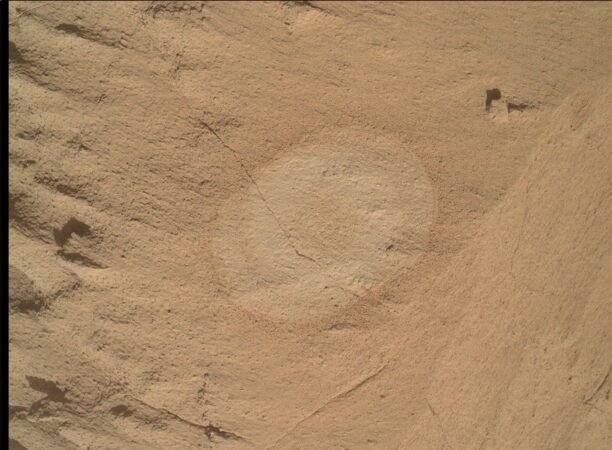Top Highlights
-
The rover successfully traveled ~22 meters towards its target but halted due to a steering command that caused it to bump a rock, limiting arm activities but conserving power for future operations.
-
Mastcam successfully integrated science imaging with operational tasks, only increasing rover awake time by ~2 minutes while capturing diverse geological features, including mosaics of “Devil’s Gate” and “Moonstone Beach.”
-
Plans include conducting a ChemCam LIBS raster on “Jackrabbit Flat” and a distant RMI mosaic of “Condor Peak,” aiming to advance the rover 53 meters into a new valley toward significant geological formations.
- A “Post Traverse Autonav Terrain Observation” (PoTATO) will be performed after the drive for analyzing the rover’s navigation map, adding a light-hearted element to the mission with the fun acronym.
Mars Rover Drives Forward with Exciting Discoveries
NASA’s Mars rover recently completed a productive drive over two sols, or Martian days, aiding our understanding of the planet’s surface. The team anticipated a journey of 30 meters but achieved 22 meters due to a steering command that unintentionally halted progress. However, the rover hit a rock instead of turning in place. Although this unexpected situation caused instability, it allows for more focused exploration in the days ahead.
Despite this minor setback, the rover’s arm remained stowed. This decision will conserve power during the challenging Martian winter, making it possible for the team to maximize the rover’s capabilities. Consequently, mission specialists remain optimistic about future operations and the rich data still to come.
In addition to the driving efforts, the rover captured impressive images of the Martian landscape. The imaging team planned 52 photos, including detailed mosaics of features like “Devil’s Gate” ridge and “Moonstone Beach.” Remarkably, they extended the rover’s awake time by only two minutes. This efficient approach ensures that the rover collects valuable data while using its energy wisely.
Moving forward, the rover will focus on analyzing a vertical vein at a site called “Jackrabbit Flat.” This endeavor incorporates advanced laser technology, promising new insights into the Martian geology. Additionally, a robotic observation of the terrain will help refine navigation for future drives, enhancing the rover’s ability to explore new areas.
As the rover continues its journey, it contributes to the ongoing development of technologies that support distant planetary exploration. Each successful drive and discovery brings us closer to understanding Mars and its unique features. Scientists eagerly await the upcoming findings, hoping they will reveal more about this fascinating world.
Discover More Technology Insights
Learn how the Internet of Things (IoT) is transforming everyday life.
Discover archived knowledge and digital history on the Internet Archive.
SciV1

